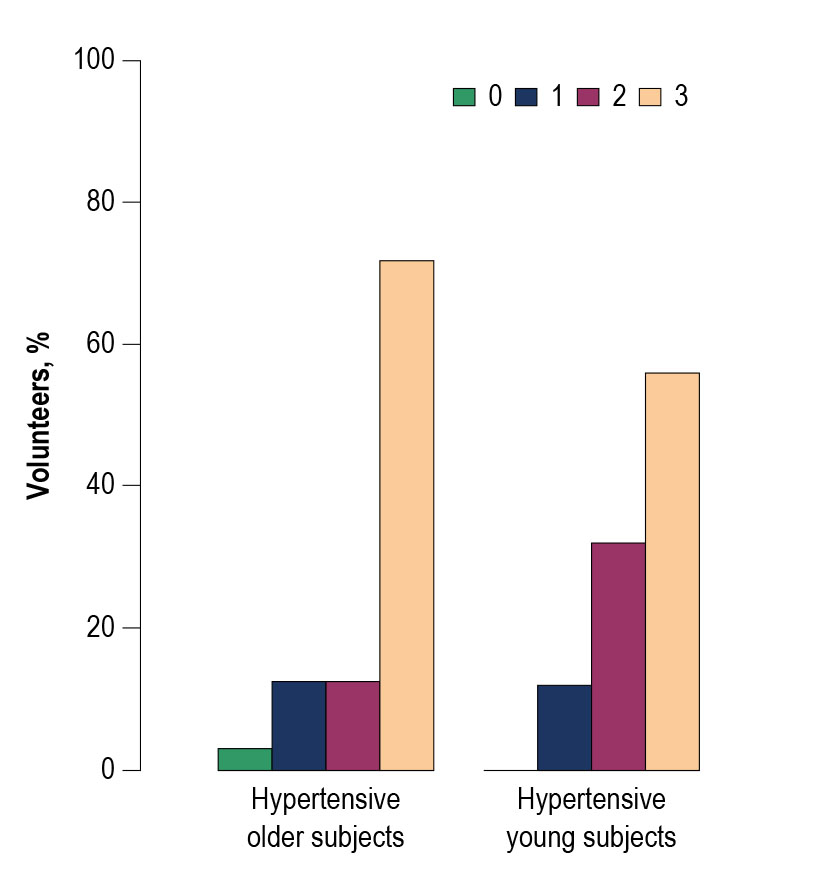Volume 113, Nº 3, September 2019
DOI: http://www.dx.doi.org/10.5935/abc.20190157
ORIGINAL ARTICLE
Salt Preference is Linked to Hypertension and not to Aging
Patrícia Teixeira Meirelles Villela
Eduardo Borges de-Oliveira
Paula Teixeira Meirelles Villela
Jose Maria Thiago Bonardi
Rodrigo Fenner Bertani
Julio Cesar Moriguti
Eduardo Ferriolli
Nereida K. C. Lima
Dr. Patrícia Teixeira Meirelles Villela

Figure 1 – Distribution of the preference for bread samples among hypertensive volunteers in the first experiment, without the addition of oregano. 0: did not perceive a difference; 1: preferred the sample with 1.5% salt; 2: preferred the sample with 2.0% salt; 3: preferred the sample with 2.7% salt.
Abstract
Background: Seasoning is one of the recommended strategies to reduce salt in foods. However, only a few studies have studied salt preference changes using seasoning.
Objectives: The aim of this study was to compare preference for salty bread, and if seasoning can change preference in hypertensive and normotensive, young and older outpatients.
Methods: Outpatients (n = 118) were classified in four groups: older hypertensive subjects (OH) (n = 32), young hypertensive (YH) (n = 25); older normotensive individuals (ON) (n = 28), and young normotensive (YN) (n = 33). First, volunteers random tasted bread samples with three different salt concentrations. After two weeks, they tasted the same types of breads, with seasoning added in all. Blood pressure (BP), 24-hour urinary sodium and potassium excretion (UNaV, UKV) were measured twice. Analysis: Fisher exact test, McNamer’s test and ANCOVA. Statistical significance: p < 0.05.
Results: Systolic BP, UNaV, and UKV were greater in HO and HY and they had a higher preference for saltier samples than normotensive groups (HO: 71.9%, HY: 56% vs. NO: 25%, NY; 6%, p<0.01). With oregano, hypertensive individuals preferred smaller concentrations of salt, with reduced choice for saltier samples (HO: 71.9% to 21.9%, and HY: 56% to 16%, p = 0.02), NO preferred the lowest salt concentration sample (53.6% vs. 14.3%, p < 0.01), and NY further increased the preference for the lowest one (63.6% vs. 39.4%, p = 0.03).
Conclusions: Older and younger hypertensive individuals prefer and consume more salt than normotensive ones, and the seasoned bread induced all groups to choose food with less salt. Salt preference is linked to hypertension and not to aging in outpatients. (Arq Bras Cardiol. 2019; 113(3):392-399)
Keywords: Aged; Aging; Salt Tolerance; Food Preferences; Sodium Chloride,Dietary/adverse effects; Flavoring Agents.















